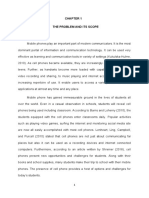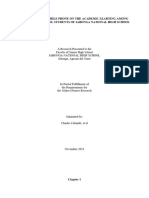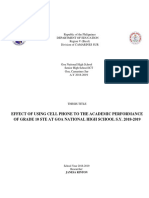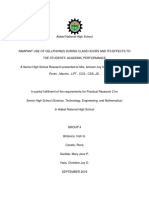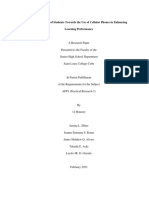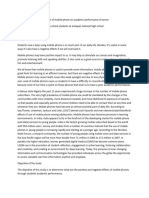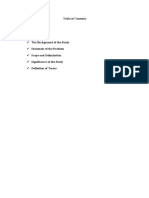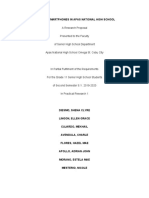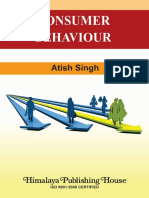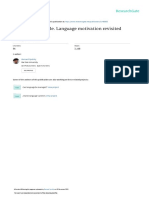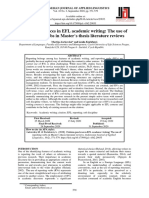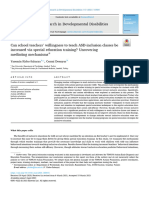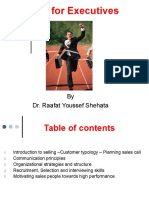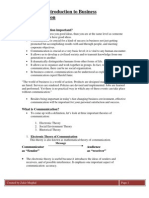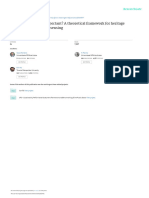0% found this document useful (0 votes)
31 views54 pagesChapter 1
This document discusses the impact of mobile phone usage on the academic performance of Grade 11 learners at Pilar Technical Vocational High School for the school year 2024-2025. It highlights the dual nature of mobile phones as tools that can either enhance learning or serve as distractions, supported by Activity Theory and the Philippine Constitution's emphasis on quality education. The study employs a quantitative research design to analyze the relationship between mobile phone usage and academic performance, aiming to fill existing research gaps on this topic.
Uploaded by
Cathy Rose Dela SenaCopyright
© © All Rights Reserved
We take content rights seriously. If you suspect this is your content, claim it here.
Available Formats
Download as DOCX, PDF, TXT or read online on Scribd
0% found this document useful (0 votes)
31 views54 pagesChapter 1
This document discusses the impact of mobile phone usage on the academic performance of Grade 11 learners at Pilar Technical Vocational High School for the school year 2024-2025. It highlights the dual nature of mobile phones as tools that can either enhance learning or serve as distractions, supported by Activity Theory and the Philippine Constitution's emphasis on quality education. The study employs a quantitative research design to analyze the relationship between mobile phone usage and academic performance, aiming to fill existing research gaps on this topic.
Uploaded by
Cathy Rose Dela SenaCopyright
© © All Rights Reserved
We take content rights seriously. If you suspect this is your content, claim it here.
Available Formats
Download as DOCX, PDF, TXT or read online on Scribd
/ 54









